Hasselblad HTS 1.5 Handleiding
Hasselblad
Niet gecategoriseerd
HTS 1.5
Bekijk gratis de handleiding van Hasselblad HTS 1.5 (8 pagina’s), behorend tot de categorie Niet gecategoriseerd. Deze gids werd als nuttig beoordeeld door 202 mensen en kreeg gemiddeld 4.8 sterren uit 101.5 reviews. Heb je een vraag over Hasselblad HTS 1.5 of wil je andere gebruikers van dit product iets vragen? Stel een vraag
Pagina 1/8

www.hasselblad.com
USER MANUALS
HTS 1.5 – 3043400 – 2011 – v3
Item no.: 3043400
HTS 1.5
1/8
HTS 1.5
Contents
Introduction 1
Basic explanation of tilt 3
Basic explanation of shift 9
Getting started 14
Tilt – in practice 19
Shift – in practice 23
Creative opportunities 28
Appendix 32
General points 33
Scheimpug principle 34
Specications 36
FAQ 39
Terminology 40
1
What is it ?
The HTS 1.5 is an accessor y for H-sys tem cam eras that great ly
expand s their usabilit y both technically and creatively. It works
by allowing a lens to be moved in tw o diff erent way s to meet
some ch allenges t ypically found in professional photog raphy. It
is compact, simple to use and can prove to be an invaluable aid
in cert ain situations.
The HTS 1.5 adapter is mounted between the lens and the cam-
era body and, by wa y of the dat abus connections, aut omatically
conveys d ata to ens ure the optimum in convenience and a ccu -
racy of exposure. This infor mation is nally st ored as metadat a
with each le tha t can then be accessed in P hocus.
And it is in P hocus th at DAC cor recti ons autom atica lly take into
account all tilt, shift a nd rotational m ovement s as well as a
long list of speci c lens data. This ability, unique to Hasselblad,
ensures the except ional quality produced by the HTS 1.5.
What does it do?
The HTS 1.5 primar ily solves problems but equally well pro-
motes cr eative oppor tunit ies to provide the photog rapher with
an almost i nvaluab le tool.
Problem solving would be m ost obviously benecial in architec-
tural work, close-up prod uct photogr aphy and c ert ain kinds of
docum entat ion, for exa mple.
Creative opportu nities would cover almost any ar ea of phot og-
raphy where a fresher app roac h is requir ed regar ding selective
focus and/or perspective manipulation.
How does it work?
It exploits established optical principles familiar to view camera us-
ers, namely ‘ ’ and ‘ ’. These capabilities are further exploittilt shift -
ed by being able to rotate the whole unit. Only basic explanations
are included here as In-depth technical descriptions are beyond
the scope of this m anual. A search on the Internet under headings
such as ‘camera movements’ and ‘Scheimpug Pr inciple’, for
example, can provide much m ore insig ht into the concepts.
To be able to allow such moveme nts using a lens from t he sta n-
dard r ange, an opt ical converter that increases lens coverage is
integr ated int o the design. In this way the ada pter expa nds the
use of a num ber of lens es that m any users a lready have ther eby
avoiding t he need for dedicated lenses.
Very sim ply put , tilting t he lens moves the orientation of the
plane of sharp focus while shifting the lens moves th e projected
image cir cle inside the cam era.
What problems does it solve?
There a re basically two ar eas that can be helped by tilt and
shift:
· Tilt is used when you w ant to change the orientation of the
plane of sharp focus.
· Shift is used to change the area selected for coverage of a
scene while retaining par allel lines in the image. It can also
used to create panorama s when used horizontally.
Although tilt is typically us ed in close-up product or lan dscap e
photography a nd shift is typically used in ar chitectural ap plica -
tions, it w ould be wr ong to hig hlight t hese areas too much .
There a re many sit uations w here some tilt or some shift or
both would go a long way in producing a competitive ed ge on an
other wise normal sh ot.
How is it creat ive?
The actions tha t produce pr actic al solut ions to problems cr eate
effects th at can also be classi ed as creative, dependent on
the intention. For example, it might be said that “st itchin g” (the
digit al combining of several ima ges) creativ ely exploits the ‘cor-
rect ’ use of movements w hile selective de-f ocusing creati vely
exploits the ‘incorrect’ use.
Hasselblad HTS 1.5 – Introduc tion
2
Compatibility
The HTS 1.5 was specically designed for use with the HCD
4/28mm and HC 2.8/80mm lenses, and these should be seen
as the pr imar y choice for maximum performance. However, the
HC 3.5/35mm, HC 3.5/50mm and HC 2.2/100mm lenses can
also be used with excellent results. Th e 13mm, 26m m and
52 mm extension tubes are also compat i ble with a ll of these
lenses. The HC 3.2/150, HC 4/210 and HC 4.5/300 can also
be used but handli ng and performanc e are compromised and
are therefore not recommended for crit ical work.
Please note that t h e HTS 1.5 is not compat ible wit h the
H1.7x conver t er, CF lens ad apter, HC 3.5-4/50-110mm, HCD
4-5.6/35-90mm, or the HC 4/120mm M acro.
The autofocus and focus conrm at ion features on t he camera
are also au tomati cally de-activ ated for a ll lenses.
Tilt
Tilt changes the orientation of the
plane of sharp focus. This creates
the appearance of an ‘increase’ or
‘decrea se’ in depth of field.
Shift
Shift allows perspective control
by preserving parallel lines in the
image. It also allows ‘stitched’
panoramas.
The integral converter in th e HTS 1.5 alt ers the an gle of view
(in eff ect, extending the focal leng th) of each lens and causes
some loss of speed. For example, a HC 2.8/80mm - HTS 1.5
combin ation will produce an image you mig ht expect from a
4.5/128 mm lens on its own, as a roug h guide. Please see
under for full d etails. Specications
For the H TS to function correctly, the rmware in the ca mera and Pho cus soft-
ware must be recent. Ple ase ensure yo u have the latest versions installed. You
can download them free of charge fro m:
http: //ww w.ha sselb lad.c om/se rvic e--suppo rt /te chnic al-suppo rt/softw are-d ownloads
Rotation
Allows the whole unit,
at any tilt and shift set-
tings, to be rotated for
further control.
20º
total
180º
total
36mm
total
TILT
– a basic explanation
A classic problem in close- up product
photography and similar areas, is the lack
of depth of eld.
Using tilt can solve many such problems
as well as offering creative solutions.
4
With a basic understanding o f the principles behind
tilt and shift, you will gain mor e confident contro l of
the HTS 1.5 and be able to exploit i ts potent ial to the
optimum.
The function of a camer a lens is to project an image o nto a sen-
sor. The senso r, being effectively two dimensional and lying in a
specic plane, can only r ecord a t wo dime nsional at plane, in
the sam e orient ation, in the subject.
In pra ctice we norma lly perc eive so me areas in front an d behind
this at plane in the subjec t as “sharp” and t his is t erm ed the
depth o f eld (which in its tur n expan ds or cont rac ts acco rding
to aper ture set tin g and subject dis tanc e).
Tilt
The lens is normally set per pendicular to t he image p lane and
there fore is ef fect ively in parallel with th e sensor as well. This
provides three planes t o consider – the sensor, the lens an d the
subject – all par allel. They a re also interrelat ed, so moving one
will have an e ffect on the others. This is where tilt is int roduced.
In the diag ram below, the imag e plane, lens plane an d subject
plane ar e parallel. This creates an ar ea of acc eptable sharp -
ness t he dept h of eld. In t his case, not all of the subject –
lies wit hin the bo undar ies of the dept h of e ld and tho se par ts
there fore appear unsharp. By tilt ing the lens it is possible to
includ e more of t he objects in th e depth o f eld wit hout having
to use a smaller aper ture.
Basic explanation of tilt
Tilt
Original scene
from camera
viewpoint In this case, the lens is
focused in front of the
yellow object.
At the given ap erture
settin g, the yellow object
is covere d by the depth
of field, the red object
partly covere d and the
blue object not covered
at all. The yellow object
will therefore be accept-
ably sharp, the red object
partly sharp and the blue
object un sharp.
Lens plane
Image (sensor) plane
Depth of field
Subject plane

www.hasselblad.com
USER MANUALS
HTS 1.5 – 3043400 – 2011 – v3
Item no.: 3043400
HTS 1.5
2/8
5
Camera angle and lens movement
Original scene
TILT
In this diagra m, if di stanc e C is now altered so that
the blue object i s sharp, then di stanc e D will be
altered acco rding ly. Likewi se E and F.
Only mi llimeters of d ifference in distance are r equir ed
from len s to sen sor to cre ate gr eat changes in subject
to lens focus distance and thi s is why tilt bec omes a
possibility.
When ti lting the lens, distance D is decrea sed, al low-
ing foc us for the longer distance C. Si milarly, F has
now increased allowing focus for the sho rter d istan ce
E. Con seque ntly, the red object has the required se n-
sor to len s distance fo r corre ct focus and so has the
blue object, thereby allowing them to be both sha rp at
the same focus setting with out any nee d to alte r the
aper ture se tting.
In this diagra m, a focus set ting has been made for
the yellow objec t at distance A. This in turn produce s
a speci fic ‘len s to sensor’ distance B.
The relationship between these two distance s is
reciprocal ; alter on e and you must alter the other to
maintain sharp focus.
Fig. 1
Fig. 2
Fig. 3
continued overleaf
continued overleaf
continued overleaf
6
ResultInside the camera
Only the yellow objects are shar p
All the objects are now much sharper
BA
C
C
E
E
D
F
Fig. 1 Fig. 1
Fig. 2 Fig. 2
Fig. 3 Fig. 3
F
D
7
In this diagram, the lens is focused on the yellow ob-
jects. At the widest apertu re only the yell ow objects are
covered by the depth of fiel d.
This situation illustrates that producing sharpn ess in
certain par ts of the subject can produce unsharpness
in other parts of the image.
Note that the vertical objects show a vary ing amount
of sharpne ss according to height as well, not only dis-
tance from the camera as might normally be expected.
You should be aware of this possibility occurring. In
this particular case, if the yellow objects were one solid
object, it might hide the unsharp section of the blue
object to produce app arent sharpness over the whole
image.
Sharp
Sharp Unsharp
Unsharp
Sharp
Unsharp
Unsharp
Fig. 4
Sharp
Unsharp
Sharp
8
In this diagram, the lens is focused on the yellow
objects. At the wide st aperture only the yellow
objects are covered by the depth of field.
When the lens is tilted, the plane of the depth of
field tilts. The left side of the blue object is now
sharp and the right side unsharp. The left yellow
object is unsharp while the right yellow obj ect
remains sharp.
Note that in this case, as opposed to the previous
situation illu strated, the sharpne ss of each object
is not affected by its height.
Unsh arp
Unsh arp
Unsh arp
Sharp
Unsh arp Sharp
Sharp
Fig. 5
SHIF T
– a basic explanation
A classic problem in architectural work
and similar is the preservation of parallel
elements in the subject when the camera
angle has to be moved.
Shift also allows the creation of ‘stitched’
panoramas.
10
Shift
The image from t he lens is focused and proje cted inside t he
camera onto th e sensor. Nor mally, this so called ‘image c ircle’
is just lar ge enoug h to cover t he sensor. However, the integ ral
conver ter in t he HTS 1.5 en larges t he image c ircle. This a llows
par ts of the image to be projected out side of t he sensor a rea.
These part s would not normally be rec orde d but would never the -
less remain accessible.
If the le ns is shifted, the projected ima ge will consequen tly
move, allowing the previousl y unrecorded par ts of the im age to
project ont o t he sensor and ther eby be recorded.
Shift ing t h e lens allow s the cam era (image plane and lens
plane) to rem ain parallel to the subject. This pr events any paral-
lels in the subjec t from co nverg ing as would normally be t he
case if t he camera was jus t pointe d upwards.
View of inside the camer a
(In reality the proje cted image would be
inverted)
The enlarged image circle is projected onto the
sensor (repre sented by the grey rect angle).
In this ca se, par t of the image lie s outside the
sensor.
Tilting the camera upwards to include t he top
of the blue object would make the parallels in
the yellow objects converge.
Shift
Basic explanation of shift

www.hasselblad.com
USER MANUALS
HTS 1.5 – 3043400 – 2011 – v3
Item no.: 3043400
3/8
HTS 1.5
11
Camera is levell ed and aim ed
direc tly at subject.
No lens movement.
Camera is levell ed and aim ed dire ctly at subjec t.
Lens sh ifted upwards.
Camera aimed up at subjec t. No le ns moveme nt.
Camera angle and le ns movement
Original scene
SHIFT Fig. 6
Fig. 7
Fig. 8
continued ove rlea f
continued ove rlea f
continued ove rlea f
12
The enla rged image circ le
is projected onto the s en-
sor (grey rectangle).
Part of the imag e lies
outside the se nsor.
(In reali ty the projec ted
image would be inverted)
The top of the blue object
is now projected onto the
sensor but the vertic als
have converged.
After returning th e camera
to the level posi tion and
shif ting the lens upwards ,
the projected inverted
image moves upwards, al -
lowing the top part of the
subject onto the senso r.
The verticals remain paral-
lel in the result.
Result
Inside the camera
Fig. 6 Fig. 6
Fig. 7 Fig. 7
Fig. 8 Fig. 8
15
User parts and components
1. Lens alig nment in dex 7. Alignment index
2. Tilt loc k 8. Shift scale
3. Tilt ad justmen t knob 9. Shift scale indicator
4. Shif t lock 10. Tilt scal e
5. Shif t adjustment k nob 11. Tilt scale indicator
6. Lens release but ton 12. Mount extender
Attaching and removing
The HTS 1.5 is att ached to the camera in the same mann er as
mounting a lens, matching the alignment index 9 with the in dex
on the camera body. The lens is mounted onto the adapter in
the same manner, matc hing the alignment index 1. The lens and
adapter can be mounted sin g ly or combined. Removal is either
singly or combin ed using the lens lock (6) on the adap ter and the
lens lock on the camera body in the convent ional man ner.
Atta ching th e HTS 1.5 disp lays a new screen on the camera
grip to ind icate the HTS but ton. Wh en pressed, it will bring up
the HTS s creen on t he display showing the movements’ dat a,
namely, shift in mm, tilt and rot ation in d egrees.
HTS 1.5 setting s
Shif t and tilt movement s have click stops for zero set tings and
are lockable. Rotation has clickstops for each 15º but can b e
set at any an gle up to 90º clockwise or 90º counter-clock wise.
The shif t and tilt adjus tment k nobs are released b y rotating the
Getting started
➡
1 2 3 4 5
6
10
11
12
7
8
9
16
locks (2 and 4) in a cou nter-clock wise dir ectio n. The adj ustmen t
knobs ar e then rotated in ei ther direction until the d esired posi-
tion is ac hieved and t hen sec ured in place by rot ating t he locks
in a clock wise direction.
The amo unt of shif t and tilt adjust ment c an be read off the
scales (7 and 10) by the indicators or the camera gr ip display.
Note tha t sett ings made a ccording to the c lickstops or the
scales are very close bu t approximate. For example, when tilt
has been zeroed by t he clickstop, the reading on the grip may
be displayed as 0.4°. Please note therefore:
For critical use, always check the settings on the came ra grip display.
All movements dat a is automatica lly store d with ea ch individual
le and ca n be later viewed in Ph ocus.
It is good pract ice to ensur e that both shift and tilt h ave been
zeroed b efore you star t work . There is n o indica tion in th e view-
nder display rega rding th e amount of movemen t set and it is
not always obvious just by looking at the i mage in the viewnd-
er. Also, check th e orient ation of the adapter, making sur e it is
capab le of tilting or shif ting t he lens in th e desired direct ions. In
the cas e of architectural/document ary photogr aphy or similar it
would also b e advis able to level the cam era in all planes bef ore
work be g ins.
Remem ber when using shift that the equ ipment i n use will have an effect o n
results. Smaller sensor models wil l allow mor e movemen t and lm magazines
(because t he lm area is greater) will allow less less movement to explo it
before vignetting becomes noticeable.
A 90 clo ckwise rotation is not possible if a GIL (GPS accessory) unit is attached.°
Camera settings
There is n o need to make any specic camera set tings. You
may, however, wish to make a new user prole for th e sake of
convenience. For example, you might wa nt to set the buttons at
the rear of the gri p to Stop Down and Mir ror Up for easier thumb
access (see followin g secti on for det ails . Autofocus and focus )
aid are automatically inact ivated.
Lens settings
Focus is manually controlled while sh utter and apertur e setting s
are con trolled in the conventiona l manner f rom the camera (or
Phocus, if tethered).
Exposure setting s
For opt imum acc uracy, exposure shou ld be measu red wit h shift
and tilt set at 0mm and 0°. You will note that when movements
are more t han 1mm or 1°, the exposur e inform ation is no longer
visible in t he viewfin der. This infor mation immediat ely retur ns,
however, when t he movements are zeroed aga in.
The preferred method i s therefore Manual or using Au to and
then locking th e readin g. Shif t and tilt changes can be mad e
without alter ing the exposure se ttin g s again as th e H3D II takes
such movements into account. If, however, lighting is alt ered,
then for a ccurate exposu re readi ngs, movements will ha ve to be
set back t o zero and a ne w reading t aken.
Par ticular attent ion to consistent exposure settings should be
shown when using shift to 'stitch’ shots, in o rder to avoid post–
production problems.
Technically, any alt eratio n of senso r to lens dist ance demands
a corre spondi ng exposu re comp ensation (as takes pla ce durin g
tilting ) but th e camera assess es the dat a from the HTS 1.5 an d
makes the necessary compensation automatically.
Mount extender
The mou nt exten der is at tached to the ca mera foot by inser ting
the positionin g pin on the extende r into the r ecess in t he quick
couplin g plate on t he came ra and rotating the ret aining scr ew
clock wise int o place. Th e mount extende r creates cleara nce
from the tripod/stand head to allow for fre e rotat ion of the u nit.
Storage and transportation
It is reco mmend ed that you store the HTS wit h zero movements
in the supplied case. Avoid leaving the HT S for long period s with
extr eme movement set tings, pa rti cularly in ver y hot conditions,
for examp le, in a closed c ar in the su n. Occasionally check th e
optic s for dust or marks, treating t he glass surf aces with the
customary precautions.
Getting Started
The HTS 1.5 is very simple to use. The
high level of integration within the system
makes it almost seamless in operation.
Product specificaties
| Merk: | Hasselblad |
| Categorie: | Niet gecategoriseerd |
| Model: | HTS 1.5 |
Heb je hulp nodig?
Als je hulp nodig hebt met Hasselblad HTS 1.5 stel dan hieronder een vraag en andere gebruikers zullen je antwoorden
Handleiding Niet gecategoriseerd Hasselblad
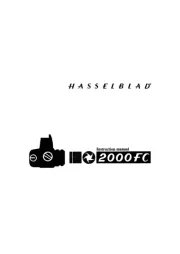
30 Maart 2025
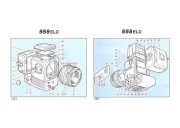
30 Maart 2025
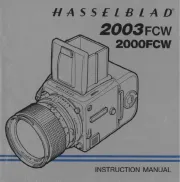
30 Maart 2025
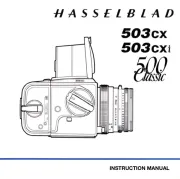
30 Maart 2025
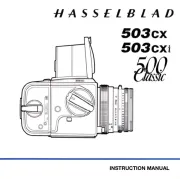
30 Maart 2025

30 Maart 2025
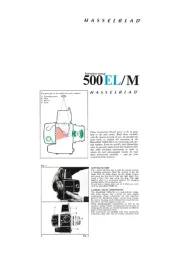
30 Maart 2025
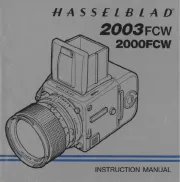
30 Maart 2025
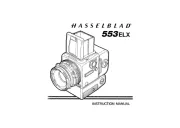
30 Maart 2025
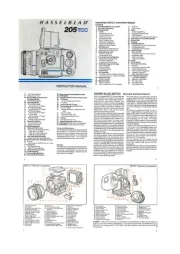
30 Maart 2025
Handleiding Niet gecategoriseerd
- Jolin
- Zanussi
- Fantini Cosmi
- James
- Tutis
- Teia
- UAvionix
- Casr
- Lumantek
- Fortinge
- ProfiCook
- Nesco
- Sagitter
- Nord
- Naim
Nieuwste handleidingen voor Niet gecategoriseerd
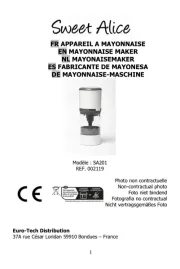
15 September 2025

15 September 2025

15 September 2025
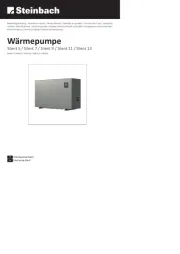
15 September 2025
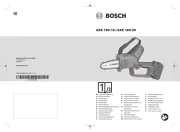
15 September 2025

15 September 2025

15 September 2025
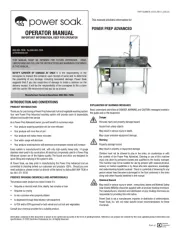
15 September 2025

15 September 2025
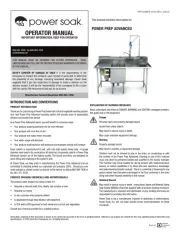
15 September 2025